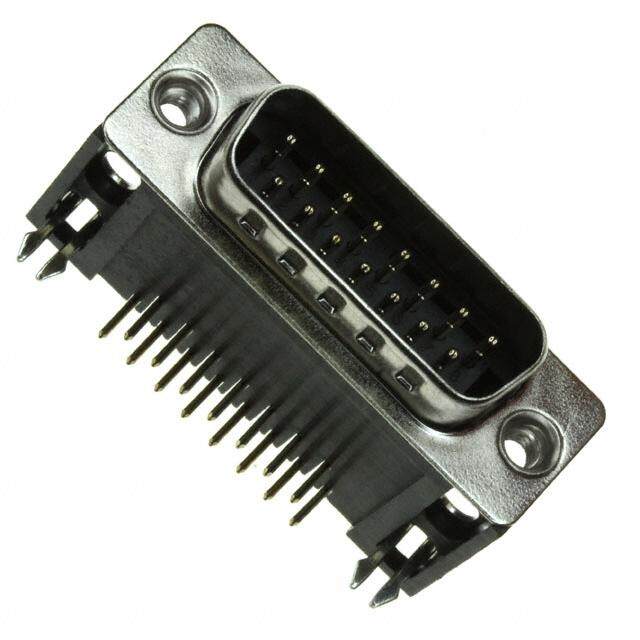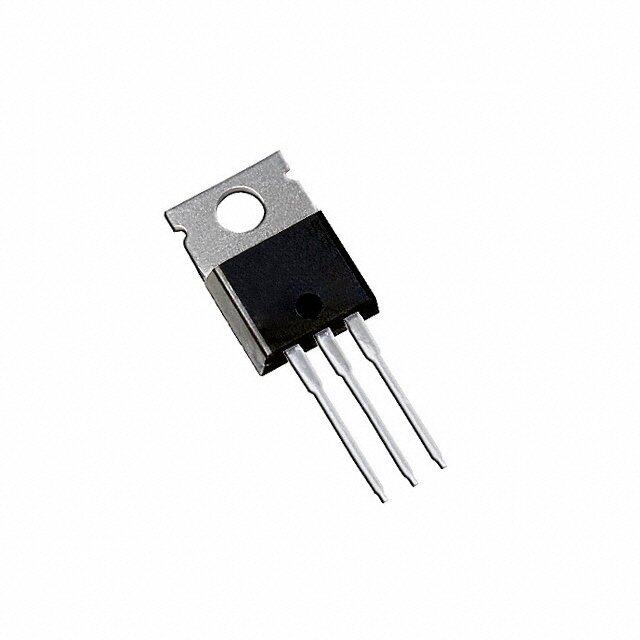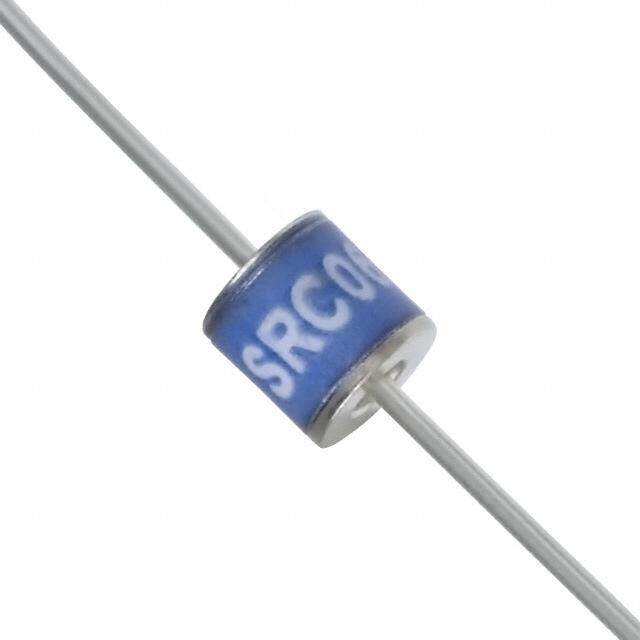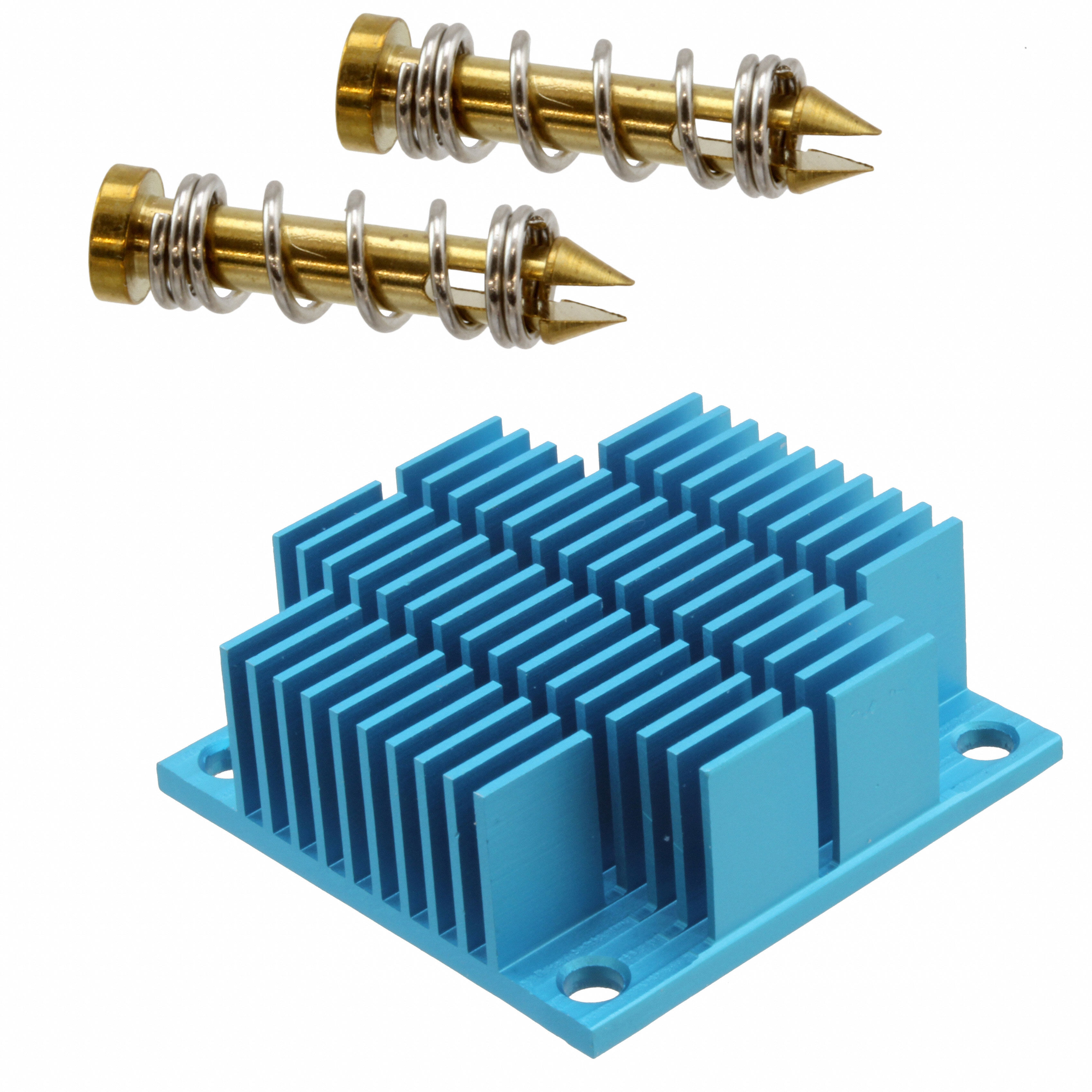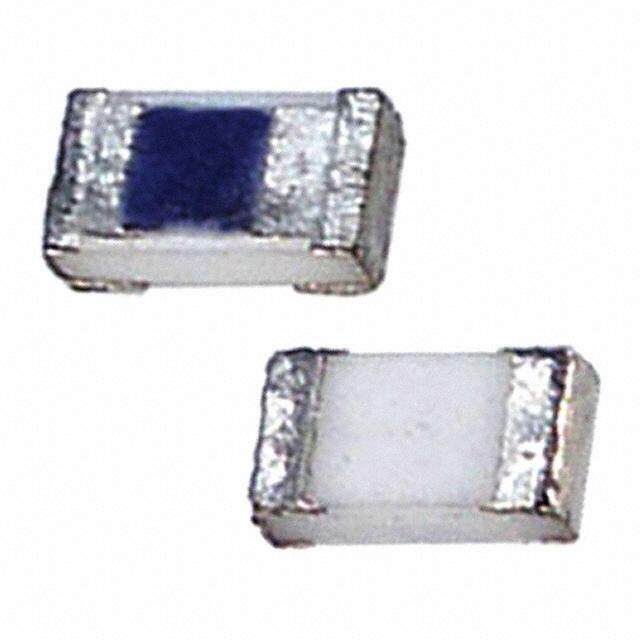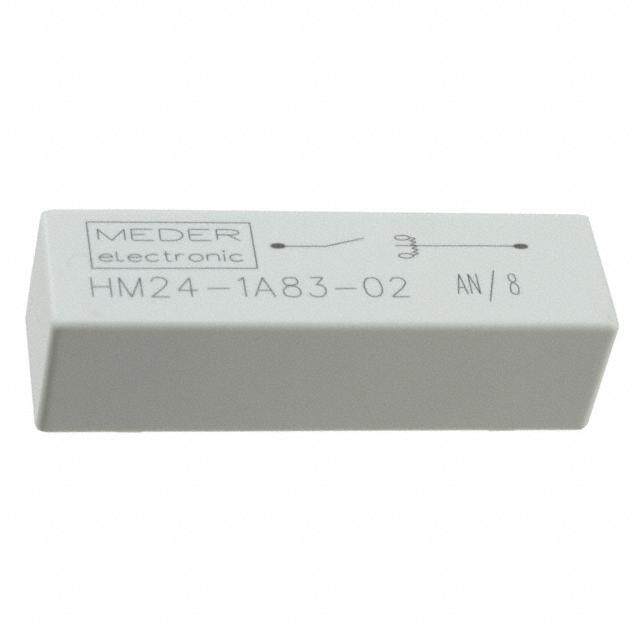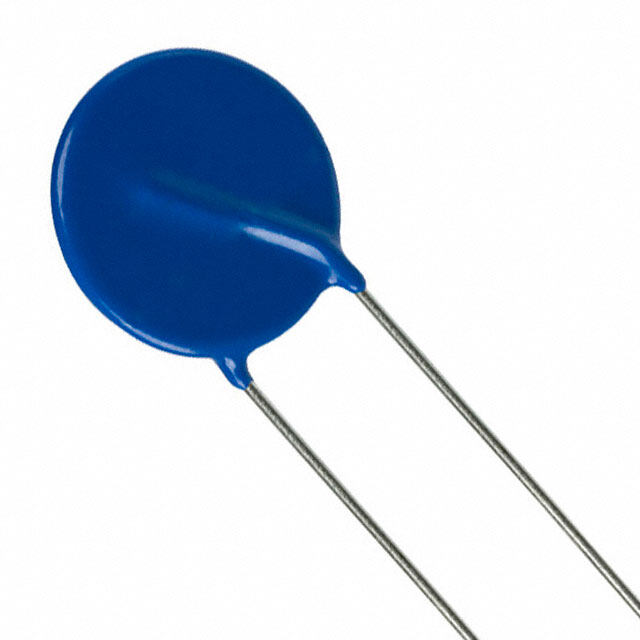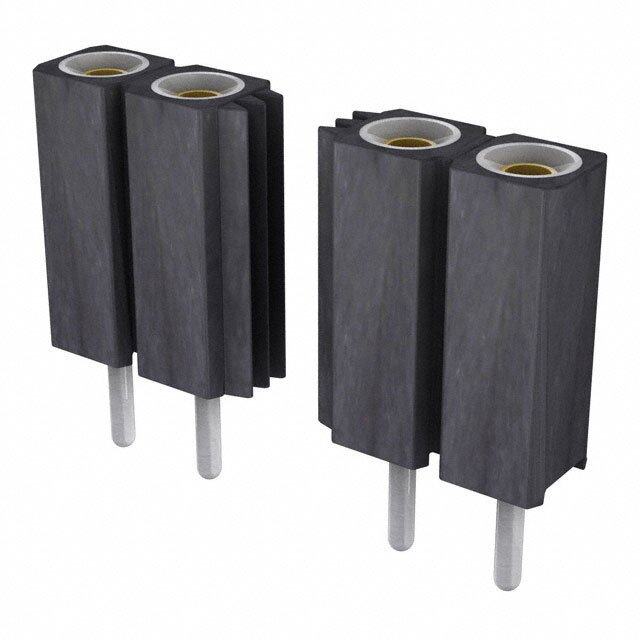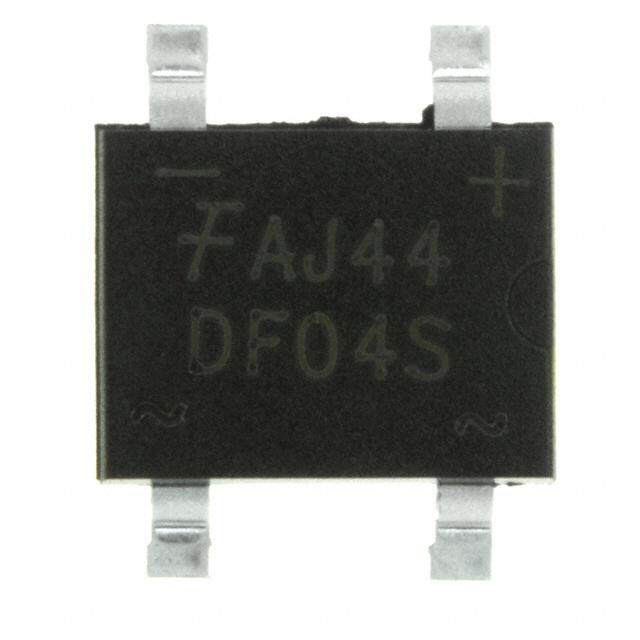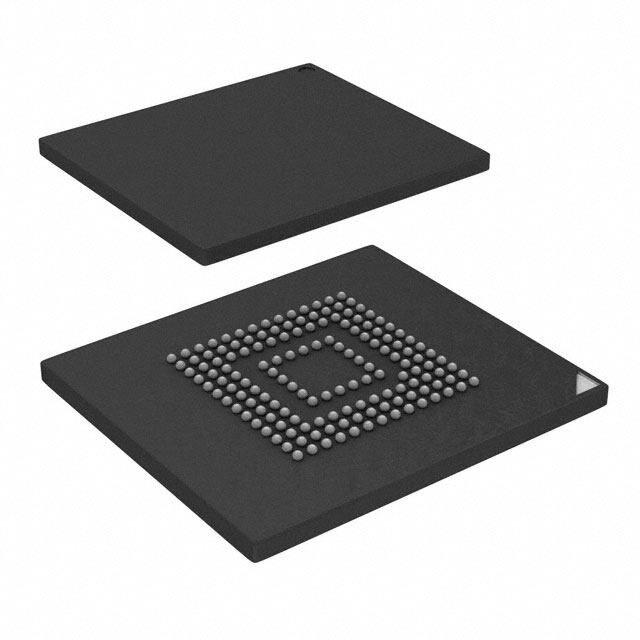ICGOO在线商城 > SIT8209AC-23-33E-100.000000X
- 型号: SIT8209AC-23-33E-100.000000X
- 制造商: SiTime
- 库位|库存: xxxx|xxxx
- 要求:
| 数量阶梯 | 香港交货 | 国内含税 |
| +xxxx | $xxxx | ¥xxxx |
查看当月历史价格
查看今年历史价格
SIT8209AC-23-33E-100.000000X产品简介:
ICGOO电子元器件商城为您提供SIT8209AC-23-33E-100.000000X由SiTime设计生产,在icgoo商城现货销售,并且可以通过原厂、代理商等渠道进行代购。 提供SIT8209AC-23-33E-100.000000X价格参考以及SiTimeSIT8209AC-23-33E-100.000000X封装/规格参数等产品信息。 你可以下载SIT8209AC-23-33E-100.000000X参考资料、Datasheet数据手册功能说明书, 资料中有SIT8209AC-23-33E-100.000000X详细功能的应用电路图电压和使用方法及教程。
| 参数 | 数值 |
| 产品目录 | 晶体和振荡器 |
| 描述 | OSC MEMS 100.000MHZ SMD |
| 产品分类 | |
| 品牌 | SiTIME |
| 数据手册 | |
| 产品图片 |
|
| 产品型号 | SIT8209AC-23-33E-100.000000X |
| rohs | 无铅 / 符合限制有害物质指令(RoHS)规范要求 |
| 产品系列 | SiT8209 |
| 其它名称 | 1473-1203-1 |
| 功能 | 三态(输出启用) |
| 包装 | 剪切带 (CT) |
| 大小/尺寸 | 0.126" 长 x 0.098" 宽(3.20mm x 2.50mm) |
| 安装类型 | 表面贴装 |
| 封装/外壳 | 4-SMD,无引线(DFN,LCC) |
| 工作温度 | -20°C ~ 70°C |
| 标准包装 | 1 |
| 电压-电源 | 3.3V |
| 电流-电源(最大值) | 36mA |
| 电流-电源(禁用)(最大值) | 31mA |
| 等级 | - |
| 类型 | MEMS(硅) |
| 输出 | LVCMOS,LVTTL |
| 频率 | 100MHz |
| 频率稳定度 | ±50ppm |
| 高度 | 0.031"(0.80mm) |
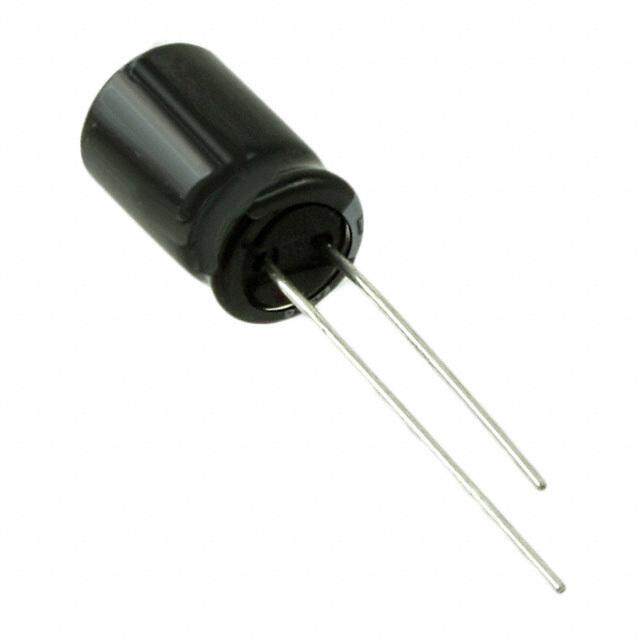
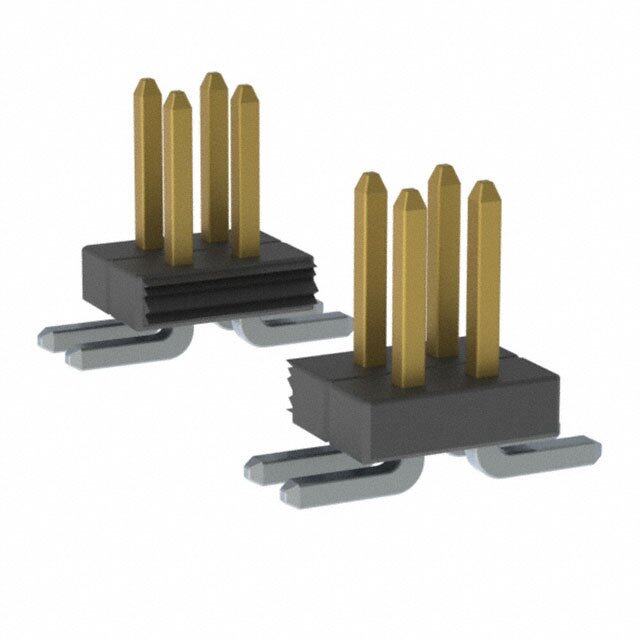

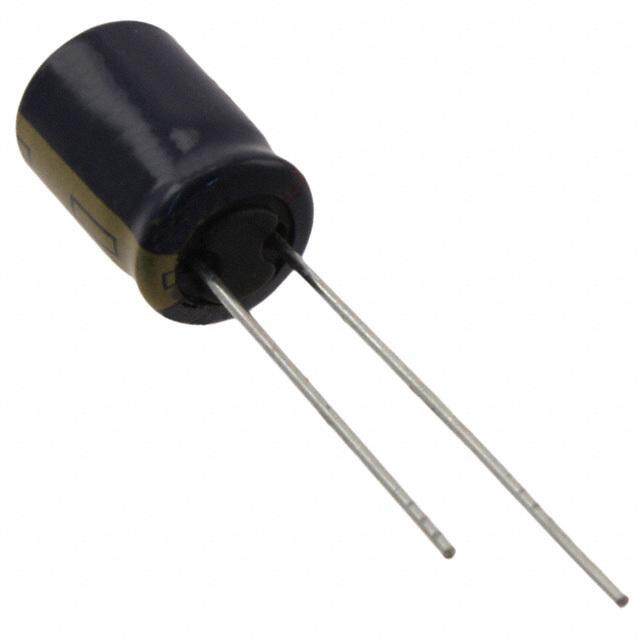

PDF Datasheet 数据手册内容提取
SiT8209 Ultra-Performance Oscillator Features Applications (cid:1) Any frequency between 80.000001 and 220 MHz accurate to (cid:1) SATA, SAS, Ethernet, 10-Gigabit Ethernet, SONET, PCI 6 decimal places Express, video, Wireless (cid:1) 100% pin-to-pin drop-in replacement to quartz-based oscillators (cid:1) Computing, storage, networking, telecom, industrial control (cid:1) Ultra-low phase jitter: 0.5 ps (12 kHz to 20 MHz) (cid:1) Frequency stability as low as ±10 PPM (cid:1) Industrial or extended commercial temperature range (cid:1) LVCMOS/LVTTL compatible output (cid:1) Standard 4-pin packages: 2.5 x 2.0, 3.2 x 2.5, 5.0 x 3.2, 7.0 x 5.0 mm x mm (cid:1) Outstanding silicon reliability of 2 FIT or 500 million hour MTBF (cid:1) Pb-free, RoHS and REACH compliant (cid:1) Ultra-short lead time Table 1. Electrical Characteristics[1] Parameter Symbol Min. Typ. Max. Unit Condition Output Frequency Range f 80.000001 – 220 MHz Frequency Stability F_stab -10 – +10 PPM Inclusive of Initial tolerance at 25 °C, and variations over -20 – +20 PPM operating temperature, rated power supply voltage and load -25 – +25 PPM -50 – +50 PPM Operating Temperature Range T_use -20 – +70 °C Extended Commercial -40 – +85 °C Industrial Supply Voltage Vdd 1.71 1.8 1.89 V Supply voltages between 2.5V and 3.3V can be supported. Contact SiTime for guaranteed performance specs for supply 2.25 2.5 2.75 V voltages not specified in this table. 2.52 2.8 3.08 V 2.97 3.3 3.63 V Current Consumption Idd – 34 36 mA No load condition, f = 100 MHz, Vdd = 2.5V, 2.8V or 3.3V – 30 33 mA No load condition, f = 100 MHz, Vdd = 1.8V OE Disable Current I_OD – – 31 mA Vdd = 2.5V, 2.8V or 3.3V, OE = GND, output is Weakly Pulled Down – – 30 mA Vdd = 1.8 V. OE = GND, output is Weakly Pulled Down Standby Current I_std – – 70 µA Vdd = 2.5V, 2.8V or 3.3V,ST = GND, output is Weakly Pulled Down – – 10 µA Vdd = 1.8 V.ST = GND, output is Weakly Pulled Down Duty Cycle DC 45 – 55 % f <= 165 MHz, all Vdds. 40 – 60 % f > 165 MHz, all Vdds. Rise/Fall Time Tr, Tf – 1.2 2 ns 15 pF load, 10% - 90% Vdd Output Voltage High VOH 90% – – Vdd IOH = -6 mA, IOL = 6 mA, (Vdd = 3.3V, 2.8V, 2.5V) IOH = -3 mA, IOL = 3 mA, (Vdd = 1.8V) Output Voltage Low VOL – – 10% Vdd Input Voltage High VIH 70% – – Vdd Pin 1, OE or ST Input Voltage Low VIL – – 30% Vdd Pin 1, OE or ST Input Pull-up Impedance Z_in – 100 250 kΩ Pin 1, OE logic high or logic low, or ST logic high 2 – – MΩ Pin 1, ST logic low Startup Time T_start – 7 10 ms Measured from the time Vdd reaches its rated minimum value OE Enable/Disable Time T_oe – – 115 ns f = 80 MHz, For other frequencies, T_oe = 100 ns + 3 cycles Resume Time T_resume – – 10 ms In standby mode, measured from the time ST pin crosses 50% threshold. Refer to Figure 5. RMS Period Jitter T_jitt – 1.5 2 ps f = 156.25 MHz, Vdd = 2.5V, 2.8V or 3.3V – 2 3 ps f = 156.25 MHz, Vdd = 1.8V RMS Phase Jitter (random) T_phj – 0.5 1 ps f = 156.25 MHz, Integration bandwidth = 12 kHz to 20 MHz First year Aging F_aging -1.5 – +1.5 PPM 25°C 10-year Aging -5 – +5 PPM 25°C Note: 1. All electrical specifications in the above table are specified with 15 pF output load and for all Vdd(s) unless otherwise stated. Rev 1.1 January 2, 2017 www.sitime.com
SiT8209 Ultra-Performance Oscillator Table 2. Pin Configuration Top View Pin Symbol Functionality Output H or Open[2]: specified frequency output Enable L: output is high impedance. Only output driver is disabled. OE/ST 1 4 VDD 1 OE/ ST H or Open[2]: specified frequency output Standby L: output is low (weak pull down). Device goes to sleep mode. Supply current reduces to I_std. 2 GND Power Electrical ground[3] GND 2 3 OUT 3 OUT Output Oscillator output 4 VDD Power Power supply voltage[3] Figure 1. Pin Assignments Notes: 2. A pull-up resistor of <10 kΩ between OE/ ST pin and Vdd is recommended in high noise environment. 3. A capacitor of value 0.1 µF between Vdd and GND is recommended. Table 3. Absolute Maximum Attempted operation outside the absolute maximum ratings of the part may cause permanent damage to the part. Actual performance of the IC is only guaranteed within the operational specifications, not at absolute maximum ratings. Parameter Min. Max. Unit Storage Temperature -65 150 °C VDD -0.5 4 V Electrostatic Discharge – 2000 V Soldering Temperature (follow standard Pb free soldering guidelines) – 260 °C Junction Temperature – 150 °C Table 4. Thermal Consideration Package θJA, 4 Layer Board (°C/W) θJA, 2 Layer Board (°C/W) θJC, Bottom (°C/W) 7050 191 263 30 5032 97 199 24 3225 109 212 27 2520 117 222 26 Table 5. Environmental Compliance Parameter Condition/Test Method Mechanical Shock MIL-STD-883F, Method 2002 Mechanical Vibration MIL-STD-883F, Method 2007 Temperature Cycle JESD22, Method A104 Solderability MIL-STD-883F, Method 2003 Moisture Sensitivity Level MSL1 @ 260°C Rev. 1.1 Page 2 of 15 www.sitime.com
SiT8209 Ultra-Performance Oscillator Phase Noise Plot -40 -60 Integrated random phase jitter (12kHz to 20MHz): 0.49 ps,RMS ) z H -80 Bc/ (d e s -100 oi n se a h -120 P -140 -160 3 4 5 6 7 10 10 10 10 10 Frequency offset (Hz) Figure 2. Phase Noise, 156.25 MHz, 3.3V, LVCMOS Output Test Circuit and Waveform[4] Vdd Vout Test Point tr tf 4 3 Power 90% Vdd Supply 0.1µF 15pF 50% 1 2 (including probe 10% Vdd and fixture capacitance) High Pulse Low Pulse (TH) (TL) OE/ST Function Vdd Period 1kΩ Figure 3. Test Circuit Figure 4. Waveform Notes: 4. Duty Cycle is computed as Duty Cycle = TH/Period. 5. SiT8209 supports the configurable duty cycle feature. For custom duty cycle at any given frequency, contact SiTime. Rev. 1.1 Page 3 of 15 www.sitime.com
SiT8209 Ultra-Performance Oscillator Timing Diagram Figure 5. Startup Timing (OE/ST Mode) Figure 6. Standby Resume Timing (ST Mode Only) Figure 7. OE Disable Timing (OE Mode Only) Figure 6. OE Enable Timing (OE Mode Only) Notes: 6. SiT8209 supports NO RUNT pulses and No glitches during startup or resume. 7. SiT8209 supports gated output which is accurate within rated frequency stability from the first cycle. Rev. 1.1 Page 4 of 15 www.sitime.com
SiT8209 Ultra-Performance Oscillator Performance Plots[8] 3.3V 2.5V 1.8V 3.3V 2.5V 1.8V 3.00 40.0 38.0 2.50 36.0 ps d, mA 33324208....0000 eriod jitter, 2 1 ..0500 Id 26.0 MS P1 .00 24.0 R0.50 22.0 20.0 0.00 80 100 120 140 160 180 200 220 80 100 120 140 160 180 200 220 Frequency, MHz Frequency, MHz Figure 8. Idd vs Frequency Figure 9. RMS Period Jitter vs Frequency 3.3V 2.5V 1.8V 2.5V 3.3V 1.8V 60.0 1 58.0 0.9 56.0 s 0.8 p % 54.0 er, 0.7 Duty cycle, 55442086....0000 S Phase jitt0000....6543 44.0 RM0.2 42.0 0.1 40.0 0 80 100 120 140 160 180 200 220 80 100 120 140 160 180 200 220 Frequency, MHz Frequency, MHz Figure 10. Duty Cycle vs Frequency Figure 11. RMS Phase Jitter vs Frequency 1.8V 2.5V 3.3V 1.8V (10%-90%) 2.5V (10%-90%) 3.3V (10%-90%) 1.8V (20%-80%) 2.5V (20%-80%) 3.3V (20%-80%) 35 2.0 33 1.5 d, mA 3 1 me, ns 1.0 Id 2 9 e Ti 27 Ris0.5 25- 40 -20 0 20 40 60 80 0.0 Temperature, °C -40 -20 0 20 40 60 80 Temperature, °C Figure 12. Idd vs Temperature, 100 MHz Output Figure 13. Rise Time vs Temperature, 100 MHz Output Note: 8. All plots are measured with 15pF load at room temperature, unless otherwise stated. Rev. 1.1 Page 5 of 15 www.sitime.com
SiT8209 Ultra-Performance Oscillator Programmable Drive Strength One can choose to speed up the rise/fall time to 1.41ns by then increasing the drive strength setting on the SiT8209. The SiT8209 includes a programmable drive strength feature to provide a simple, flexible tool to optimize the clock rise/fall The SiT8209 can support up to 60 pF or higher in time for specific applications. Benefits from the programmable maximum capacitive loads with up to 3 additional drive drive strength feature are: strength settings. Refer to the Rise/Tall Time Tables to determine the proper drive strength for the desired (cid:1) Improves system radiated electromagnetic interference combination of output load vs. rise/fall time (EMI) by slowing down the clock rise/fall time (cid:1) Improves the downstream clock receiver’s (RX) jitter by SiT8209 Drive Strength Selection decreasing (speeding up) the clock rise/fall time. Tables 6 through 9 define the rise/fall time for a given (cid:1) Ability to drive large capacitive loads while maintaining capacitive load and supply voltage.Select the table that full swing with sharp edge rates. matches the SiT8208 nominal supply voltage (1.8V, 2.5V, For more detailed information about rise/fall time control and 2.8V, 3.0V, 3.3V). drive strength selection, see the SiTime Applications Note 1. Select the table that matches the SiT8209 nominal section: http://www.sitime.com/support/application-notes. supply voltage (1.8V, 2.5V, 2.8V, 3.0V, 3.3V). EMI Reduction by Slowing Rise/Fall Time 2. Select the capacitive load column that matches the Figure 14 shows the harmonic power reduction as the rise/fall application requirement (5 pF to 60 pF) times are increased (slowed down). The rise/fall times are 3. Under the capacitive load column, select the expressed as a ratio of the clock period. For the ratio of 0.05, desired rise/fall times. the signal is very close to a square wave. For the ratio of 0.45, the rise/fall times are very close to near-triangular waveform. 4. The left-most column represents the part number These results, for example, show that the 11th clock harmonic code for the corresponding drive strength. can be reduced by 35 dB if the rise/fall edge is increased from 5% of the period to 45% of the period. 5. Add the drive strength code to the part number for ordering purposes. Calculating Maximum Frequency Based on the rise and fall time data given in Tables 6 through 9, the maximum frequency the oscillator can operate with guaranteed full swing of the output voltage over temperature as follows: 1 Max Frequency = 6 x (T ) rise Example 1 Figure 15. Harmonic EMI reduction as a Function of Slower Rise/Fall Time Calculate f for the following condition: MAX Jitter Reduction with Faster Rise/Fall Time (cid:1) Vdd = 1.8V (Table 6) (cid:1) Capacitive Load: 30 pF Power supply noise can be a source of jitter for the downstream chipset. One way to reduce this jitter is to (cid:1) Typical Tr/f time = 5 ns (rise/fall time part number code = G) increase rise/fall time (edge rate) of the input clock. Some chipsets would require faster rise/fall time in order to reduce Part number for the above example: their sensitivity to this type of jitter. The SiT8209 provides up to 3 additional high drive strength settings for very fast SiT8209AIGG2-18E-55.500000 rise/fall time. Refer to the Rise/Fall Time Tables to determine the proper drive strength. High Output Load Capability Drive strength code is inserted here. Default setting is “-” The rise/fall time of the input clock varies as a function of the actual capacitive load the clock drives. At any given drive strength, the rise/fall time becomes slower as the output load increases. As an example, for a 3.3V SiT8209 device with default drive strength setting, the typical rise/fall time is 1.15ns for 15 pF output load. The typical rise/fall time slows down to 2.72ns when the output load increases to 45 pF. Rev. 1.1 Page 6 of 15 www.sitime.com
SiT8209 Ultra-Performance Oscillator Rise/Fall Time (10% to 90%) vs C Tables LOAD Table 6. Vdd = 1.8V Rise/Fall Times Table 7. Vdd = 2.5V Rise/Fall Times for Specific CLOAD for Specific CLOAD Rise/Fall Time Typ (ns) Rise/Fall Time Typ (ns) Drive Strength \ CLOAD 5 pF 15 pF 30 pF 45 pF 60 pF Drive Strength \ CLOAD 5 pF 15 pF 30 pF 45 pF 60 pF L 12.45 17.68 19.48 46.21 57.82 L 8.68 13.59 18.36 32.70 42.06 A 6.50 10.27 16.21 23.92 30.73 A 4.42 7.18 11.93 16.60 21.38 R 4.38 7.05 11.61 16.17 20.83 R 2.93 4.78 8.15 11.19 14.59 B 3.27 5.30 8.89 12.18 15.75 B 2.21 3.57 6.19 8.55 11.04 S 2.62 4.25 7.20 9.81 12.65 S 1.67 2.87 4.94 6.85 8.80 D 2.19 3.52 6.00 8.31 10.59 D 1.50 2.33 4.11 5.68 7.33 T 1.76 3.01 5.14 7.10 9.15 T 1.06 2.04 3.50 4.84 6.26 E 1.59 2.59 4.49 6.25 7.98 E 0.98 1.69 3.03 4.20 5.51 U 1.49 2.28 3.96 5.55 7.15 U 0.93 1.48 2.69 3.73 4.92 F 1.22 2.10 3.57 5.00 6.46 F 0.90 1.37 2.44 3.34 4.42 W 1.07 1.88 3.23 4.50 5.87 W 0.87 1.29 2.21 3.04 4.02 G 1.01 1.64 2.95 4.12 5.40 G or "-": Default 0.67 1.20 2.00 2.79 3.69 X 0.96 1.50 2.74 3.80 4.98 X 0.44 1.10 1.86 2.56 3.43 K 0.92 1.41 2.56 3.52 4.64 K 0.38 0.99 1.76 2.37 3.18 Y 0.88 1.34 2.39 3.25 4.32 Y 0.36 0.83 1.66 2.20 2.98 Q 0.86 1.29 2.24 3.04 4.06 Q 0.34 0.71 1.58 2.07 2.80 Z or "-": Default 0.82 1.24 2.07 2.89 3.82 Z 0.33 0.65 1.51 1.95 2.65 M 0.77 1.20 1.94 2.72 3.61 M 0.32 0.62 1.44 1.85 2.50 N 0.66 1.15 1.84 2.58 3.41 N 0.31 0.59 1.37 1.77 2.39 P 0.51 1.09 1.76 2.45 3.24 P 0.30 0.57 1.29 1.70 2.28 Table 8. Vdd = 2.8V Rise/Fall Times Table 9. Vdd = 3.3V Rise/Fall Times for Specific CLOAD for Specific CLOAD Rise/Fall Time Typ (ns) Rise/Fall Time Typ (ns) Drive Strength \ CLOAD 5 pF 15 pF 30 pF 45 pF 60 pF Drive Strength \ CLOAD 5 pF 15 pF 30 pF 45 pF 60 pF L 7.93 12.69 17.94 30.10 38.89 L 7.18 11.59 17.24 27.57 35.57 A 4.06 6.66 11.04 15.31 19.80 A 3.61 6.02 10.19 13.98 18.10 R 2.68 4.40 7.53 10.29 13.37 R 2.31 3.95 6.88 9.42 12.24 B 2.00 3.25 5.66 7.84 10.11 B 1.65 2.92 5.12 7.10 9.17 S 1.59 2.57 4.54 6.27 8.07 S 1.43 2.26 4.09 5.66 7.34 D 1.19 2.14 3.76 5.21 6.72 D 1.01 1.91 3.38 4.69 6.14 T 1.00 1.79 3.20 4.43 5.77 T 0.94 1.51 2.86 3.97 5.25 E 0.94 1.51 2.78 3.84 5.06 E 0.90 1.36 2.50 3.46 4.58 U 0.90 1.38 2.48 3.40 4.50 U 0.86 1.25 2.21 3.03 4.07 F 0.87 1.29 2.21 3.03 4.05 F or "-": Default 0.48 1.15 1.95 2.72 3.65 W 0.62 1.19 1.99 2.76 3.68 W 0.38 1.04 1.77 2.47 3.31 G or "-": Default 0.41 1.08 1.84 2.52 3.36 G 0.36 0.87 1.66 2.23 3.03 X 0.37 0.96 1.72 2.33 3.15 X 0.34 0.70 1.56 2.04 2.80 K 0.35 0.78 1.63 2.15 2.92 K 0.33 0.63 1.48 1.89 2.61 Y 0.33 0.67 1.54 2.00 2.75 Y 0.32 0.60 1.40 1.79 2.43 Q 0.32 0.63 1.46 1.89 2.57 Q 0.32 0.58 1.31 1.69 2.28 Z 0.31 0.60 1.39 1.80 2.43 Z 0.30 0.56 1.22 1.62 2.17 M 0.30 0.57 1.31 1.72 2.30 M 0.30 0.55 1.12 1.54 2.07 N 0.30 0.56 1.22 1.63 2.22 N 0.30 0.54 1.02 1.47 1.97 P 0.29 0.54 1.13 1.55 2.13 P 0.29 0.52 0.95 1.41 1.90 Rev. 1.1 Page 7 of 15 www.sitime.com
SiT8209 Ultra-Performance Oscillator Instant Samples with Time Machine and For more information regarding SiTime’s field programmable solutions, visit http://www.sitime.com/time-machine and Field Programmable Oscillators http://www.sitime.com/fp-devices. SiTime supports a field programmable version of the SiT8209 low power oscillator for fast prototyping and real SiT8209 is typically factory-programmed per customer time custom- ization of features. The field programmable ordering codes for volume delivery. devices (FP devices) are available for all five standard SiT8209 package sizes and can be configured to one’s exact specification using the Time Machine II, an USB powered MEMS oscillator programmer. Customizable Features of the SiT8209 FP Devices Include (cid:1) Any frequency between 1 – 110 MHz (cid:1) Three frequency stability options, ±20 PPM, ±25 PPM, ±50 PPM (cid:1) Two operating temperatures, -20 to 70°C or -40 to 85°C (cid:1) Five supply voltage options, 1.8V, 2.5V, 2.8V, 3.0V, and 3.3V (cid:1) Output drive strength Rev. 1.1 Page 8 of 15 www.sitime.com
SiT8209 Ultra-Performance Oscillator Dimensions and Patterns Package Size – Dimensions (Unit: mm) [9] Recommended Land Pattern (Unit: mm) [10] 2.7 x 2.4 x 0.75 mm (100% compatible with 2.5 x 2. 0 mm footprint) 2.7 ± 0.05 1.00 1.9 5 YXXXX 2.4 ± 0.0 1.25 0.50 1.5 0 .85 1.0 0 . 7 5 ± 0 . 0 .5 1. 1 3.2 x 2.5 x 0.75 mm 2.2 3.2 ± 0.05 2.1 #4 #3 #3 #4 5 YXXXX 5 ± 0.0 0.9 1.9 2. 0.7 2 1. #1 #2 #2 #1 05 0.9 1.4 ± 0. 75 0. 5.0 x 3.2 x 0.75 mm 2.54 5.0 ± 0.05 2.39 #4 #3 #3 #4 05 YXXXX 3.2 ± 0. 0.8 1.1 2.2 6 #1 #2 #2 #1 1. 1.15 1.5 0.75 ± 0.05 7.0 x 5.0 x 0.90 mm 7.0 ± 0.05 5.08 5.08 YXXXX 5.0 ± 0.05 2.6 1.1 3.81 0 2. 10 1.4 90 ± 0. 2.2 0. Notes: 9. Top marking: Y denotes manufacturing origin and XXXX denotes manufacturing lot number. The value of “Y” will depend on the assembly location of the device. 10. A capacitor of value 0.1 µF between Vdd and GND is required. Rev. 1.1 Page 9 of 15 www.sitime.com
SiT8209 Ultra-Performance Oscillator Ordering Information The Part No. Guide is for reference only. To customize and build an exact part number, use the SiTime Part Number Generator. SiT8209AC-23-25E - 156.123456 T Packaging “T”: Tape & Reel, 3K reel Part Family “Y”: Tape & Reel, 1K reel “SiT8209” Blank for Bulk Revision Letter Frequency “A” is the silicon revision 80.000001 to 220.000000 MHz Temperature Range Feature Pin “E” for Output Enable “C” Ext. Commercial, -20 to 70ºC “S” for Standby “I” Industrial, -40 to 85ºC Voltage Supply Output Drive Strength “18” for 1.8V ±5% “–” Default (datasheet limits) “25” for 2.5V ±10% See Tables 6 to 9 for rise/fall times “28” for 2.8V ±10% “33” for 3.3V ±10% “L” “S” “U” “X” “Z” “A” “D” “F” “K” “M” “R” “T” “W” “Y” “N” Frequency Tolerance “B” “E” “G” “Q” “P” “F” for ±10 PPM “1” for ±20 PPM Package “2” for ±25 PPM “G” 2.5 x 2.0 “3” for ±50 PPM “2” 3.2 x 2.5 “3” 5.0 x 3.2 “8” 7.0 x 5.0 Rev. 1.1 Page 10 of 15 www.sitime.com
SiT8209 Ultra-Performance Oscillator Table 10. Additional Information Document Description Download Link Time Machine II MEMS oscillator programmer http://www.sitime.com/support/time-machine-oscillator-programmer Field Programmable Devices that can be programmable in the field http://www.sitime.com/products/field-programmable-oscillators Oscillators by Time Machine II Tape & Reel dimension, reflow profile and http://www.sitime.com/component/docman/doc_download/243-manufacturing- Manufacturing Notes other manufacturing related info notes-for-sitime-oscillators RoHS report, reliability reports, Qualification Reports http://www.sitime.com/support/quality-and-reliability composition reports Additional performance data such as phase Performance Reports noise, current consumption and jitter for selected http://www.sitime.com/support/performance-measurement-report frequencies Termination Techniques Termination design recommendations http://www.sitime.com/support/application-notes Layout Techniques Layout recommendations http://www.sitime.com/support/application-notes SiTime Corporation, 5451 Patrick Henry Drive, Santa Clara, CA 95054, USA | Phone: +1-408-328-4400 | Fax: +1-408-328-4439 © SiTime Corporation 2016-2017. The information contained herein is subject to change at any time without notice. SiTime assumes no responsibility or liability for any loss, damage or defect of a Product which is caused in whole or in part by (i) use of any circuitry other than circuitry embodied in a SiTime product, (ii) misuse or abuse including static discharge, neglect or accident, (iii) unauthorized modification or repairs which have been soldered or altered during assembly and are not capable of being tested by SiTime under its normal test conditions, or (iv) improper installation, storage, handling, warehousing or transportation, or (v) being subjected to unusual physical, thermal, or electrical stress. Disclaimer: SiTime makes no warranty of any kind, express or implied, with regard to this material, and specifically disclaims any and all express or implied warranties, either in fact or by operation of law, statutory or otherwise, including the implied warranties of merchantability and fitness for use or a particular purpose, and any implied warranty arising from course of dealing or usage of trade, as well as any common-law duties relating to accuracy or lack of negligence, with respect to this material, any SiTime product and any product documentation. Products sold by SiTime are not suitable or intended to be used in a life support application or component, to operate nuclear facilities, or in other mission critical applications where human life may be involved or at stake. All sales are made conditioned upon compliance with the critical uses policy set forth below. CRITICAL USE EXCLUSION POLICY BUYER AGREES NOT TO USE SITIME'S PRODUCTS FOR ANY APPLICATION OR IN ANY COMPONENTS USED IN LIFE SUPPORT DEVICES OR TO OPERATE NUCLEAR FACILITIES OR FOR USE IN OTHER MISSION-CRITICAL APPLICATIONS OR COMPONENTS WHERE HUMAN LIFE OR PROPERTY MAY BE AT STAKE. SiTime owns all rights, title and interest to the intellectual property related to SiTime's products, including any software, firmware, copyright, patent, or trademark. The sale of SiTime products does not convey or imply any license under patent or other rights. SiTime retains the copyright and trademark rights in all documents, catalogs and plans supplied pursuant to or ancillary to the sale of products or services by SiTime. Unless otherwise agreed to in writing by SiTime, any reproduction, modification, translation, compilation, or representation of this material shall be strictly prohibited. Rev. 1.1 Page 11 of 15 www.sitime.com
Silicon MEMS Outperforms Quartz Supplemental Information The Supplemental Information section is not part of the datasheet and is for informational purposes only. Rev. 1.1 Page 12 of 15 www.sitime.com
Silicon MEMS Outperforms Quartz Silicon MEMS Outperforms Quartz Best Electro Magnetic Susceptibility (EMS) SiTime’s oscillators in plastic packages are up to 54 times Best Reliability more immune to external electromagnetic fields than quartz Silicon is inherently more reliable than quartz. Unlike quartz oscillators as shown in Figure 3. suppliers, SiTime has in-house MEMS and analog CMOS expertise, which allows SiTime to develop the most reliable Why is EpiSeal MEMS Best in Class: products. Figure 1 shows a comparison with quartz technology. (cid:1) Internal differential architecture for best common mode noise rejection Why is EpiSeal™ MEMS Best in Class: (cid:1) Electrostatically driven MEMS resonator is more immune to EMS (cid:1) SiTime’s MEMS resonators are vacuum sealed using an advanced EpiSeal™ process, which eliminates foreign particles and improves long term aging and TXC EPS CW KYCA SLAB EpiSeal MEMS 100.0 reliability g) (cid:1) World-class MEMS and CMOS design expertise pb/ p 10.0 y ( vit siti 1.0 n e S n 0.1 o ati br Vi 0.0 10 100 1000 Vibration Frequency (Hz) Figure 3. Electro Magnetic Susceptibility (EMS)[3] Best Power Supply Noise Rejection SiTime’s MEMS oscillators are more resilient against noise Figure 1. Reliability Comparison[1] on the power supply. A comparison is shown in Figure 4. Best Aging Why is EpiSeal MEMS Best in Class: Unlike quartz, MEMS oscillators have excellent long term aging performance which is why every new SiTime (cid:1) On-chip regulators and internal differential product specifies 10-year aging. A comparison is shown architecture for common mode noise rejection in Figure 2. (cid:1) MEMS resonator is paired with advanced analog CMOS IC Why is EpiSeal MEMS Best in Class: (cid:1) SiTime’s MEMS resonators are vacuum sealed using an advanced EpiSeal™ process, which eliminates foreign particles and improves long term aging and reliability (cid:1) Inherently better immunity of electrostatically driven MEMS resonator MEMS vs. Quartz Aging EpiSeal MEMS Oscillator Quartz Oscillator 10 8 8 M) PP 6 Figure 4. Power Supply Noise Rejection[4] ± g ( gin 4 3 3.5 A 2 1.5 0 1-Year 10-Year Figure 2. Aging Comparison[2] Rev. 1.1 Page 13 of 15 www.sitime.com
Silicon MEMS Outperforms Quartz Best Vibration Robustness Best Shock Robustness SiTime’s oscillators can withstand at least 50,000 g shock. High-vibration environments are all around us. All electronics, from handheld devices to enterprise servers They all maintain their electrical performance in operation and storage systems are subject to vibration. Figure 5 during shock events. A comparison with quartz devices is shows a comparison of vibration robustness. shown in Figure 6. Why is EpiSeal MEMS Best in Class: Why is EpiSeal MEMS Best in Class: (cid:1) The moving mass of SiTime’s MEMS resonators is up (cid:1) The moving mass of SiTime’s MEMS resonators is up to 3000 times smaller than quartz to 3000 times smaller than quartz (cid:1) Center-anchored MEMS resonator is the most robust (cid:1) Center-anchored MEMS resonator is the most robust design design Figure 5. Vibration Robustness[5] Figure 6. Shock Robustness[6] Figure labels: (cid:2) TXC = TXC (cid:2) Epson = EPSN (cid:2) Connor Winfield = CW (cid:2) Kyocera = KYCA (cid:2) SiLabs = SLAB (cid:2) SiTime = EpiSeal MEMS Rev. 1.1 Page 14 of 15 www.sitime.com
Silicon MEMS Outperforms Quartz Notes: 1. Data source: Reliability documents of named companies. 2. Data source: SiTime and quartz oscillator devices datasheets. 3. Test conditions for Electro Magnetic Susceptibility (EMS): (cid:2) According to IEC EN61000-4.3 (Electromagnetic compatibility standard) (cid:2) Field strength: 3V/m (cid:2) Radiated signal modulation: AM 1 kHz at 80% depth (cid:2) Carrier frequency scan: 80 MHz – 1 GHz in 1% steps (cid:2) Antenna polarization: Vertical (cid:2) DUT position: Center aligned to antenna Devices used in this test: Label Manufacturer Part Number Technology EpiSeal MEMS SiTime SiT9120AC-1D2-33E156.250000 MEMS + PLL EPSN Epson EG-2102CA156.2500M-PHPAL3 Quartz, SAW TXC TXC BB-156.250MBE-T Quartz, 3rd Overtone CW Conner Winfield P123-156.25M Quartz, 3rd Overtone KYCA AVX Kyocera KC7050T156.250P30E00 Quartz, SAW SLAB SiLab 590AB-BDG Quartz, 3rd Overtone + PLL 4. 50 mV pk-pk Sinusoidal voltage. Devices used in this test: Label Manufacturer Part Number Technology EpiSeal MEMS SiTime SiT8208AI-33-33E-25.000000 MEMS + PLL NDK NDK NZ2523SB-25.6M Quartz KYCA AVX Kyocera KC2016B25M0C1GE00 Quartz EPSN Epson SG-310SCF-25M0-MB3 Quartz 5. Devices used in this test: same as EMS test stated in Note 3. 6. Test conditions for shock test: (cid:2) MIL-STD-883F Method 2002 (cid:2) Condition A: half sine wave shock pulse, 500-g, 1ms (cid:2) Continuous frequency measurement in 100 µs gate time for 10 seconds Devices used in this test: same as EMS test stated in Note 3. 7. Additional data, including setup and detailed results, is available upon request to qualified customer. Rev. 1.1 Page 15 of 15 www.sitime.com

 Datasheet下载
Datasheet下载

